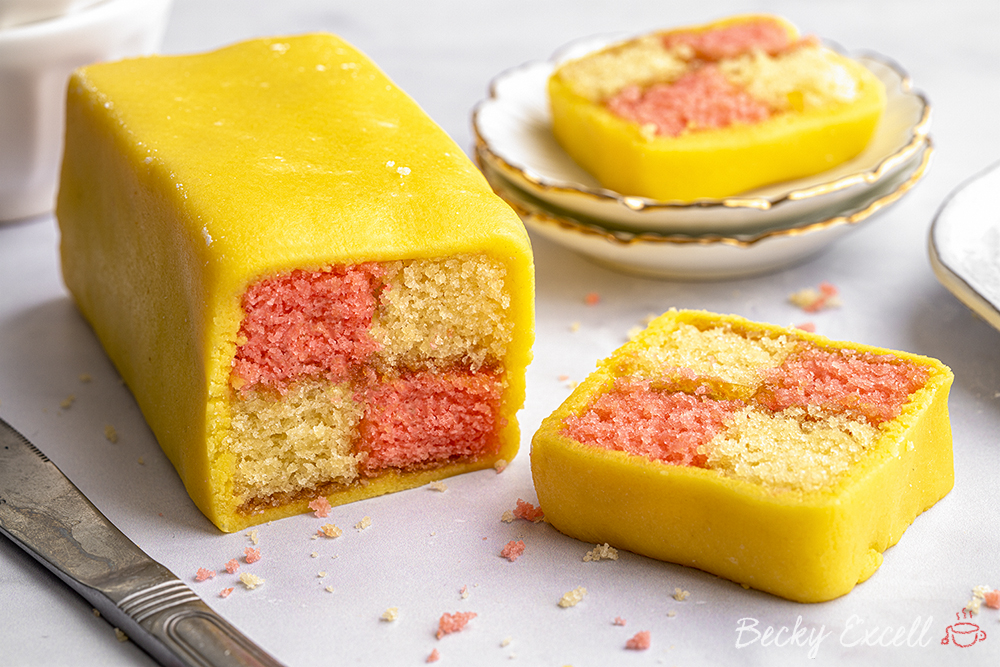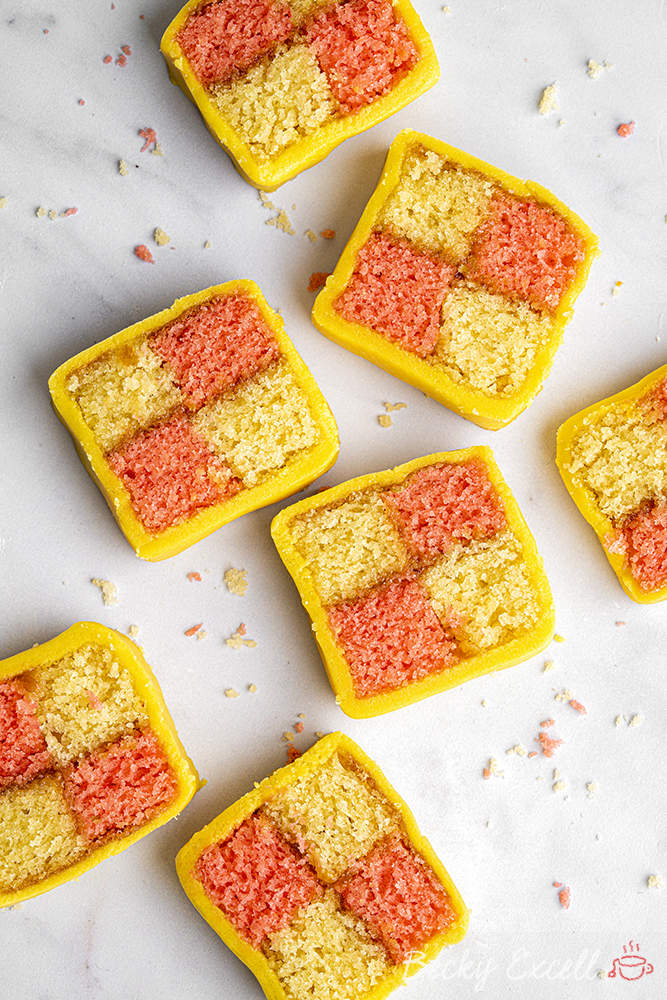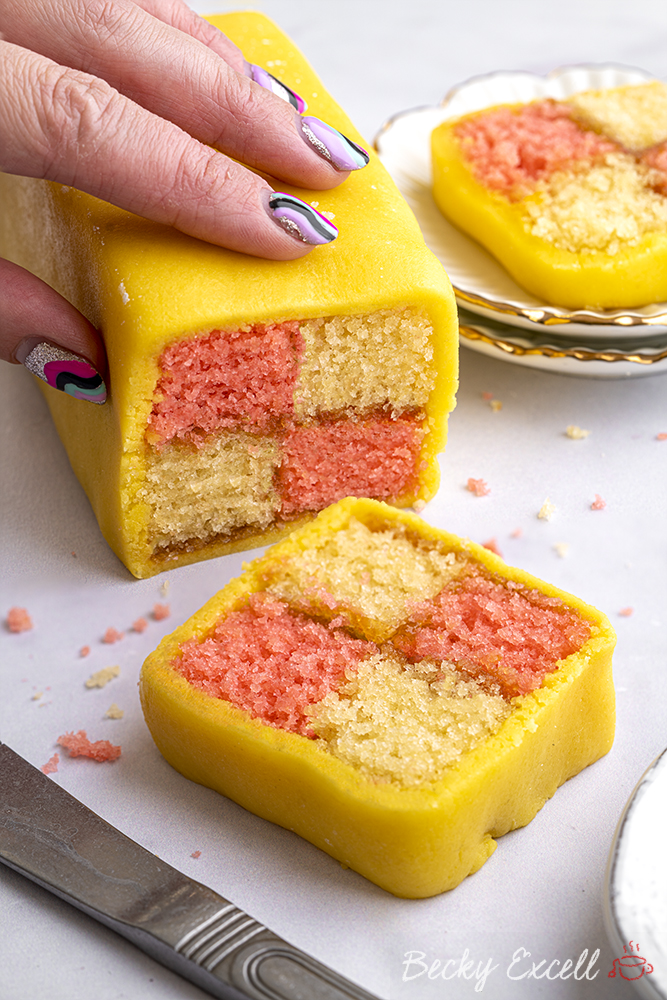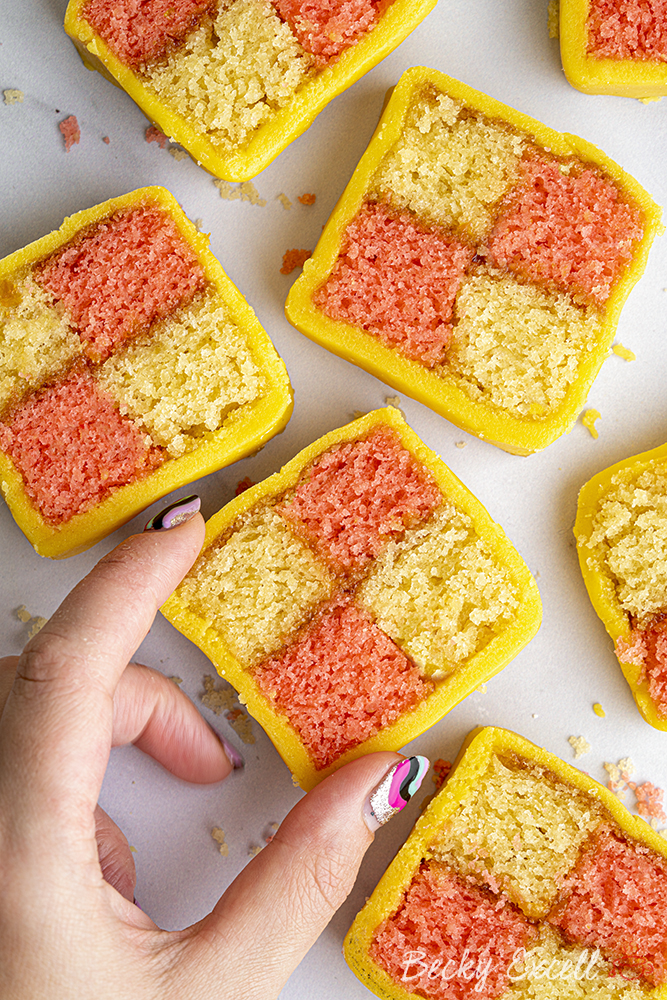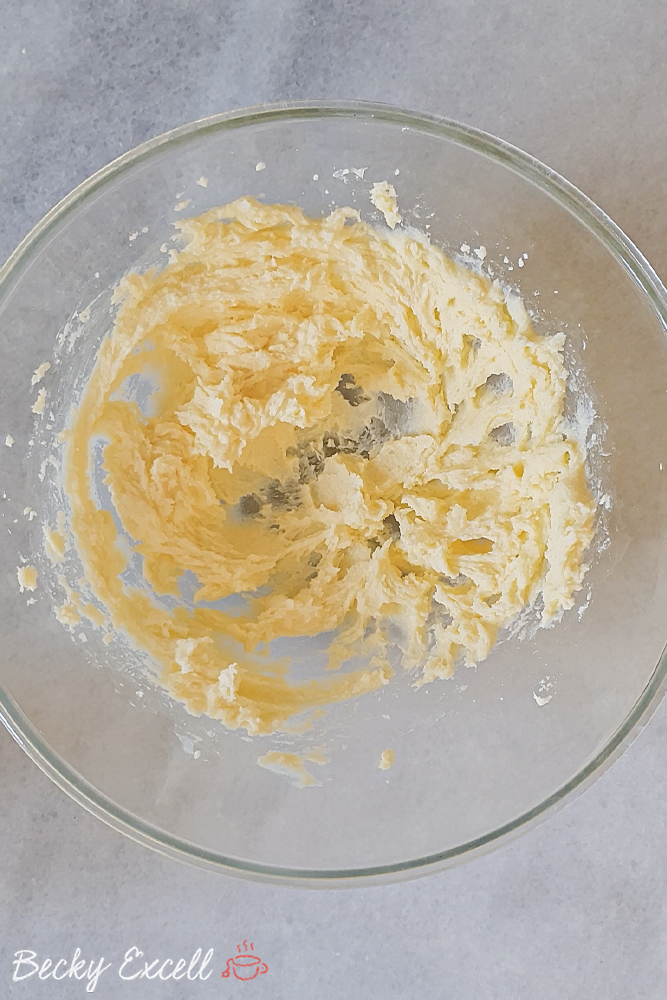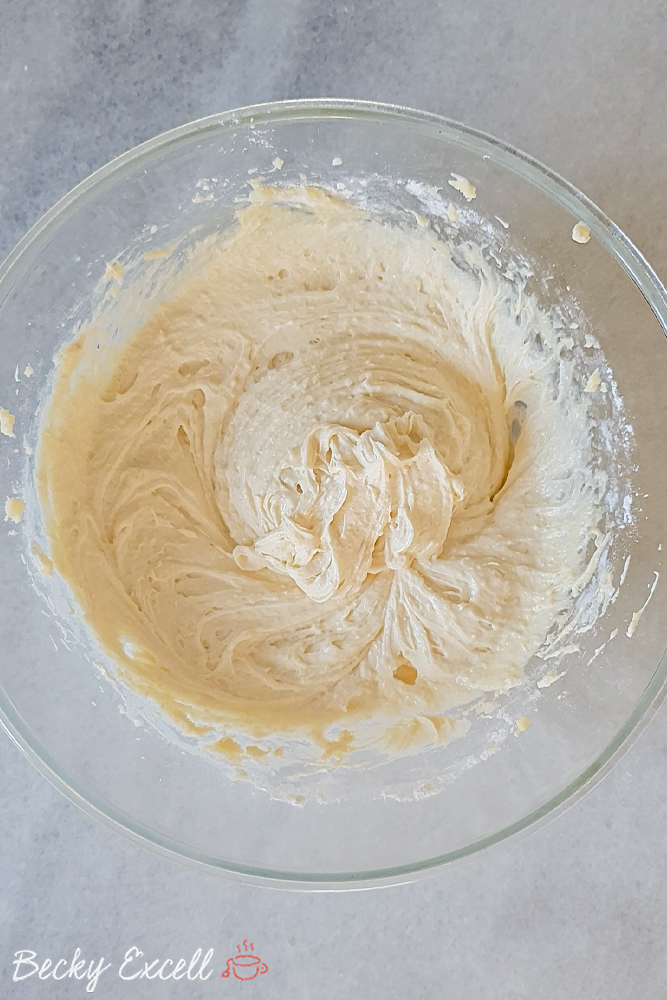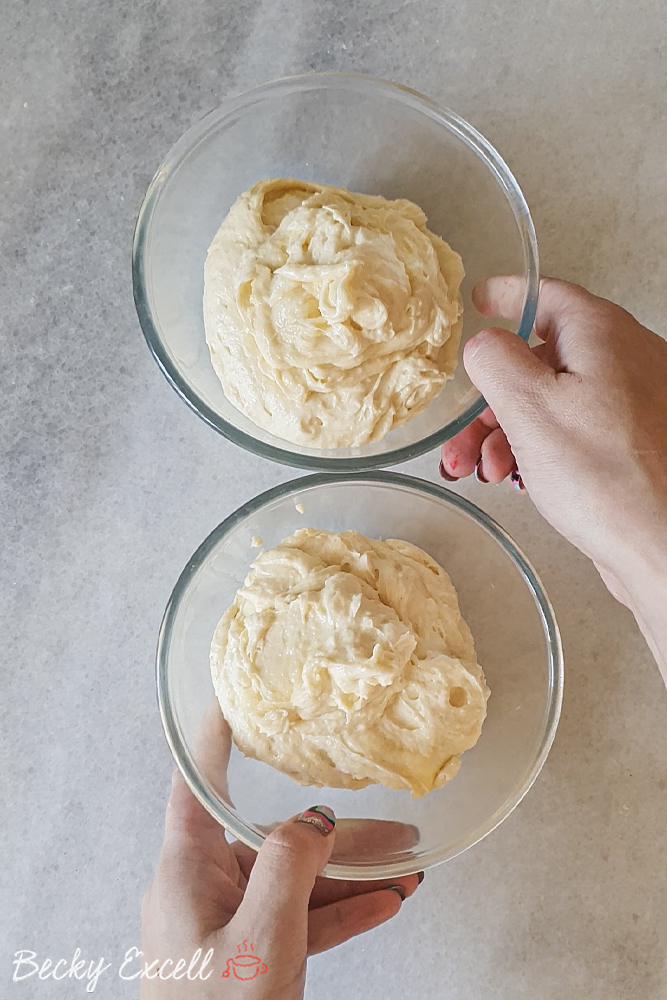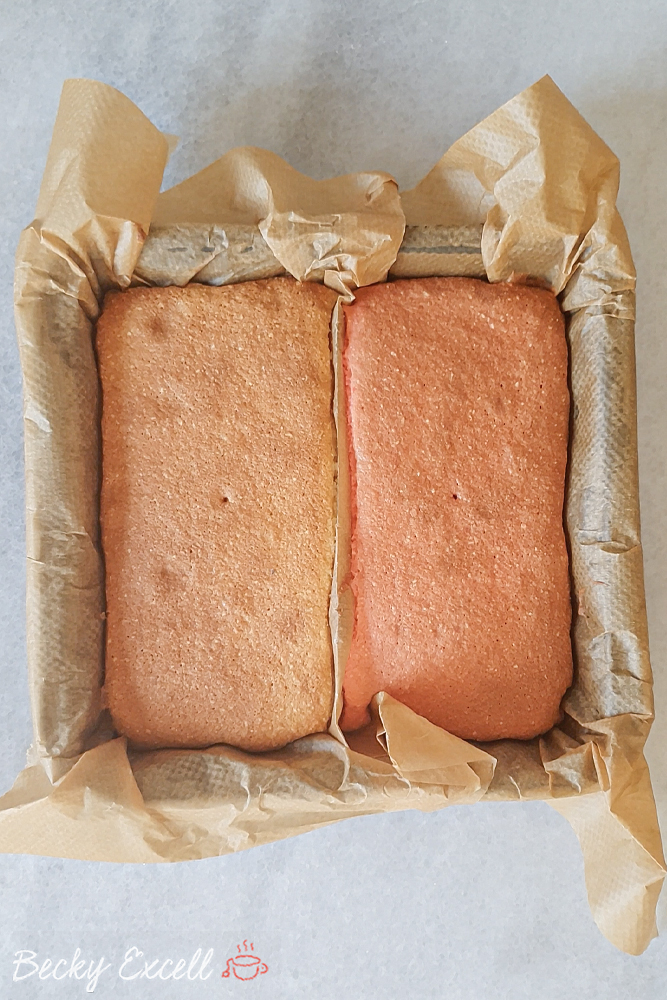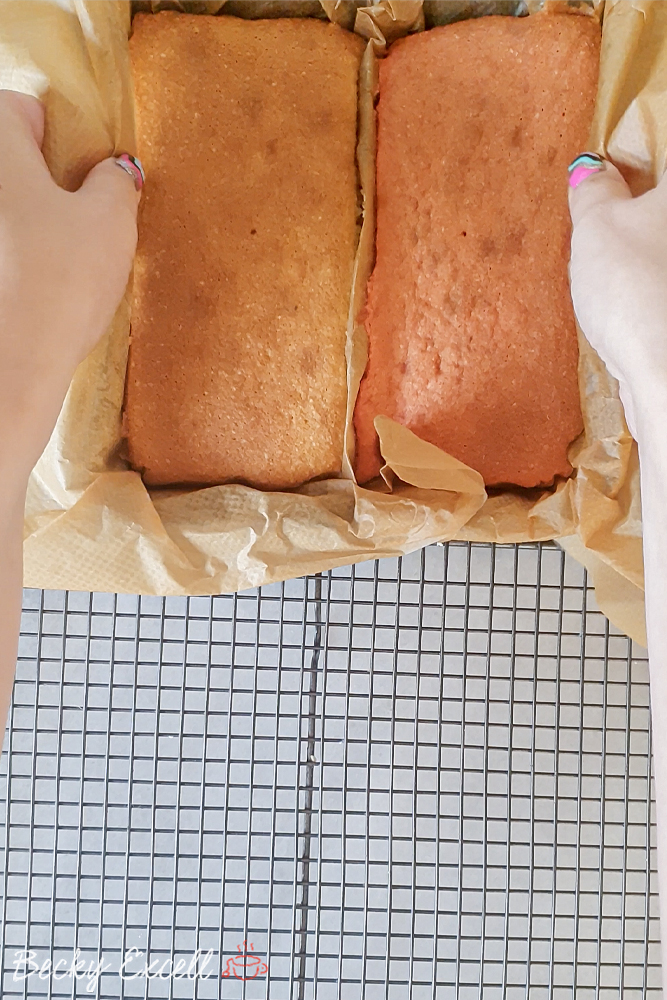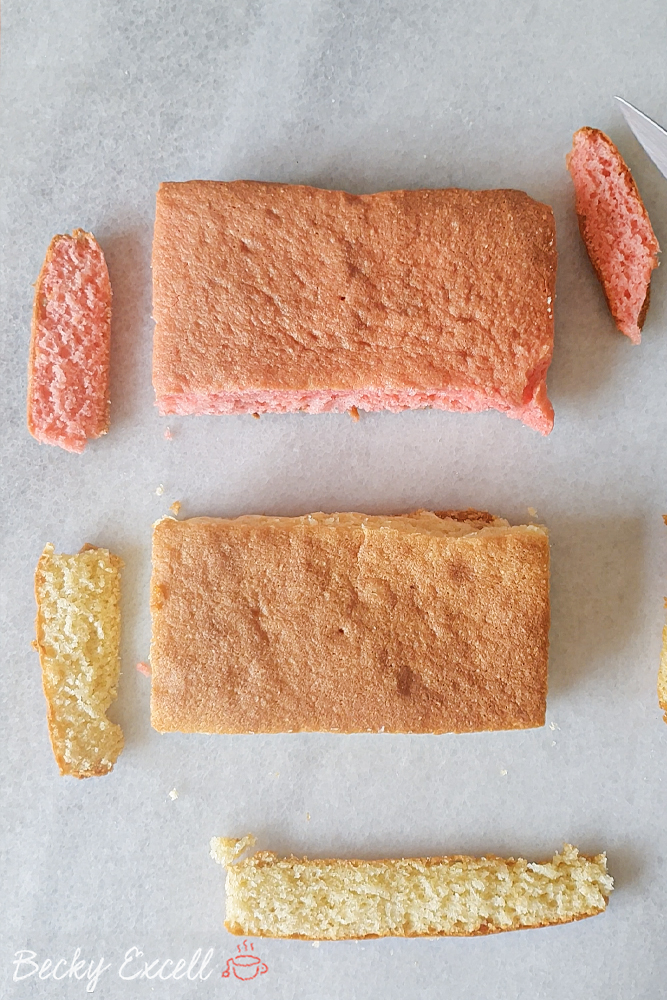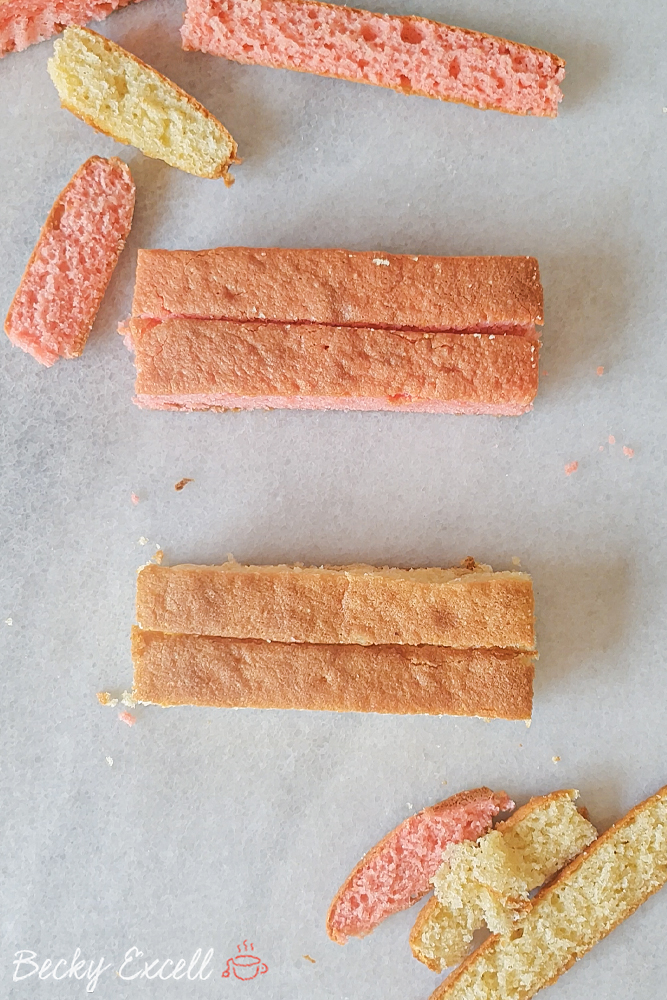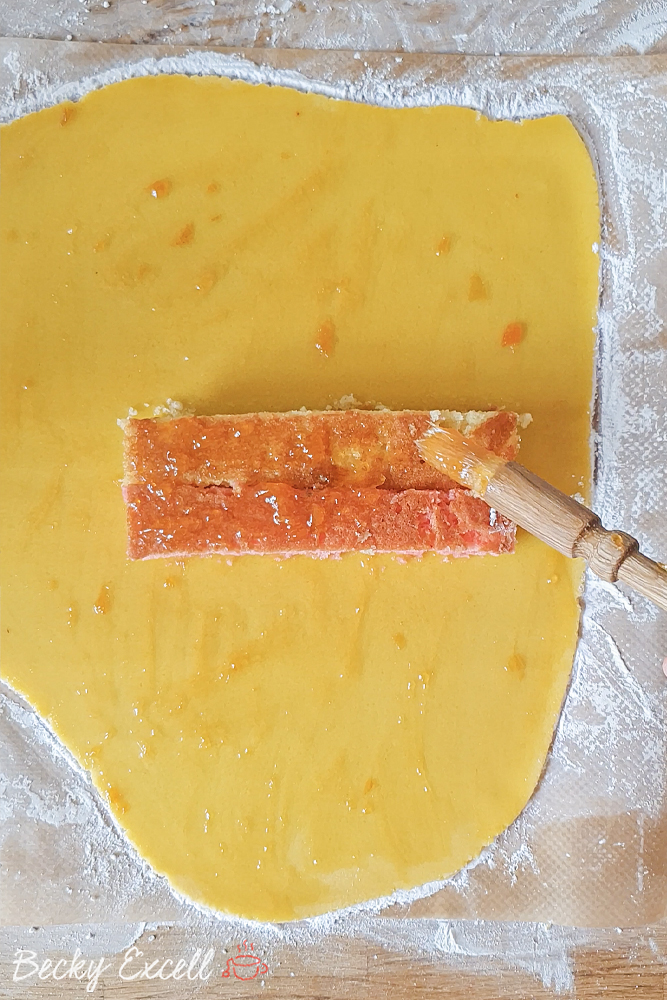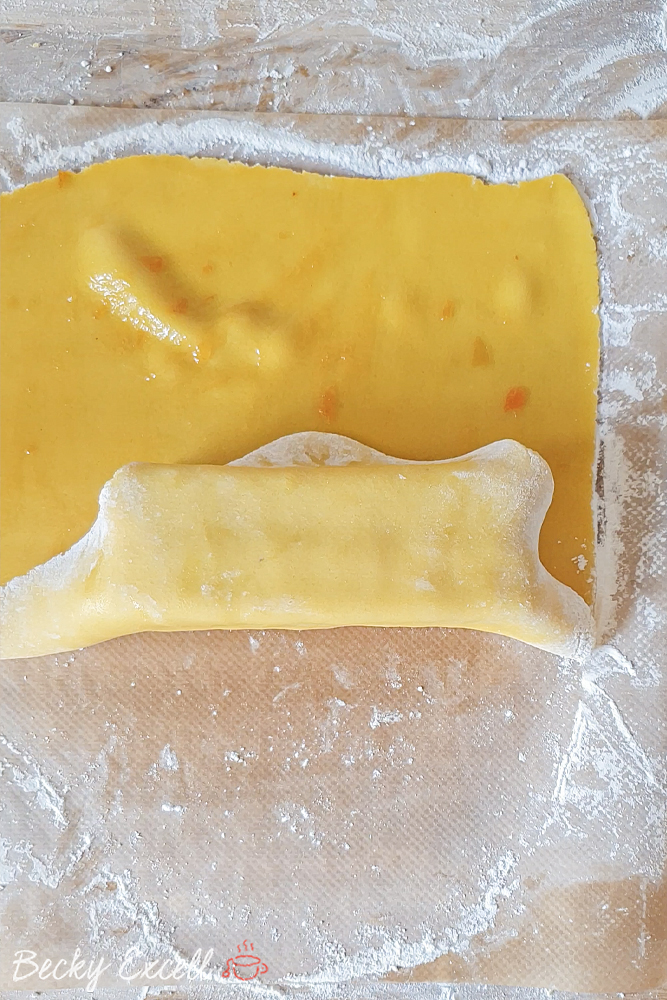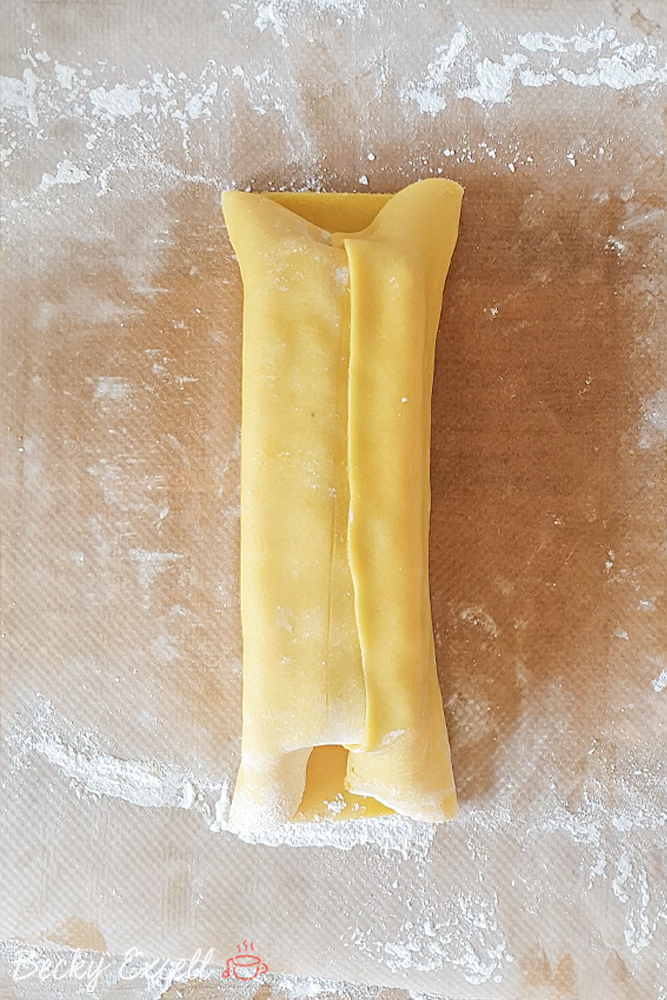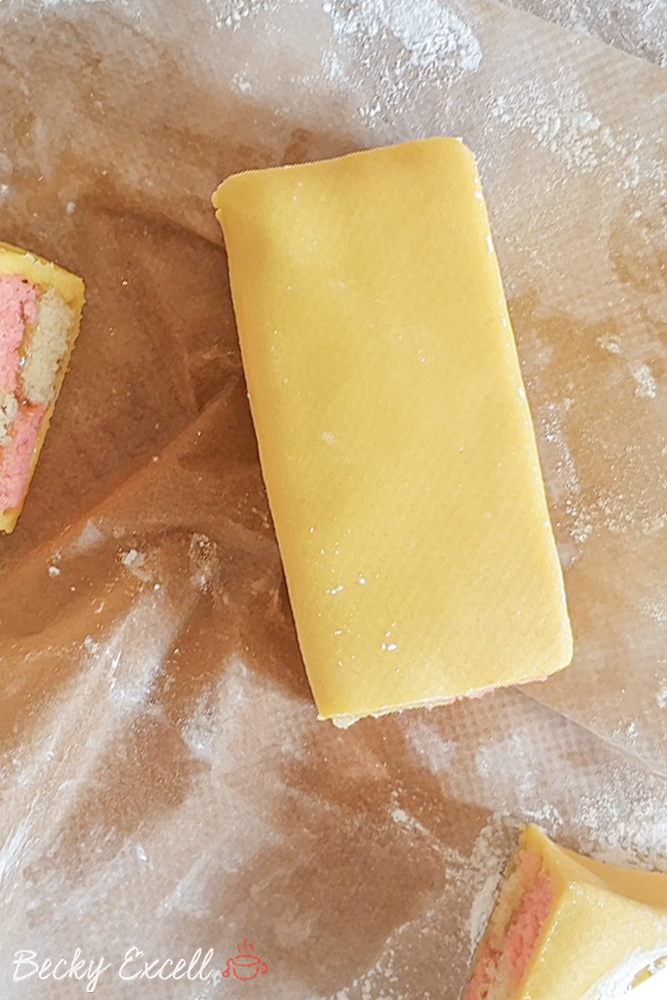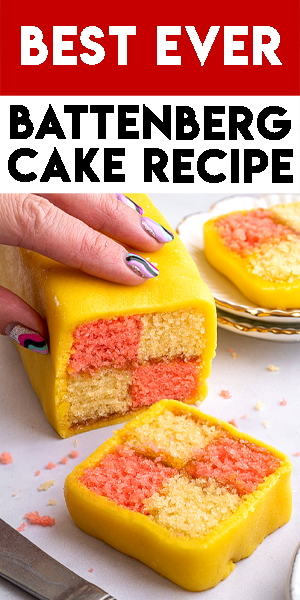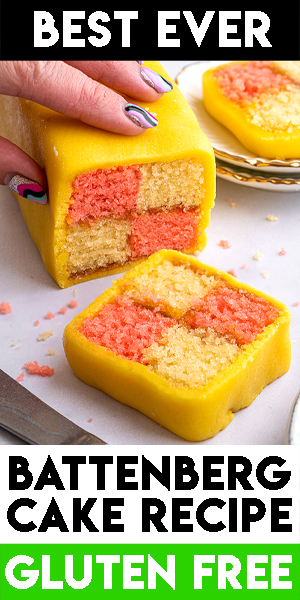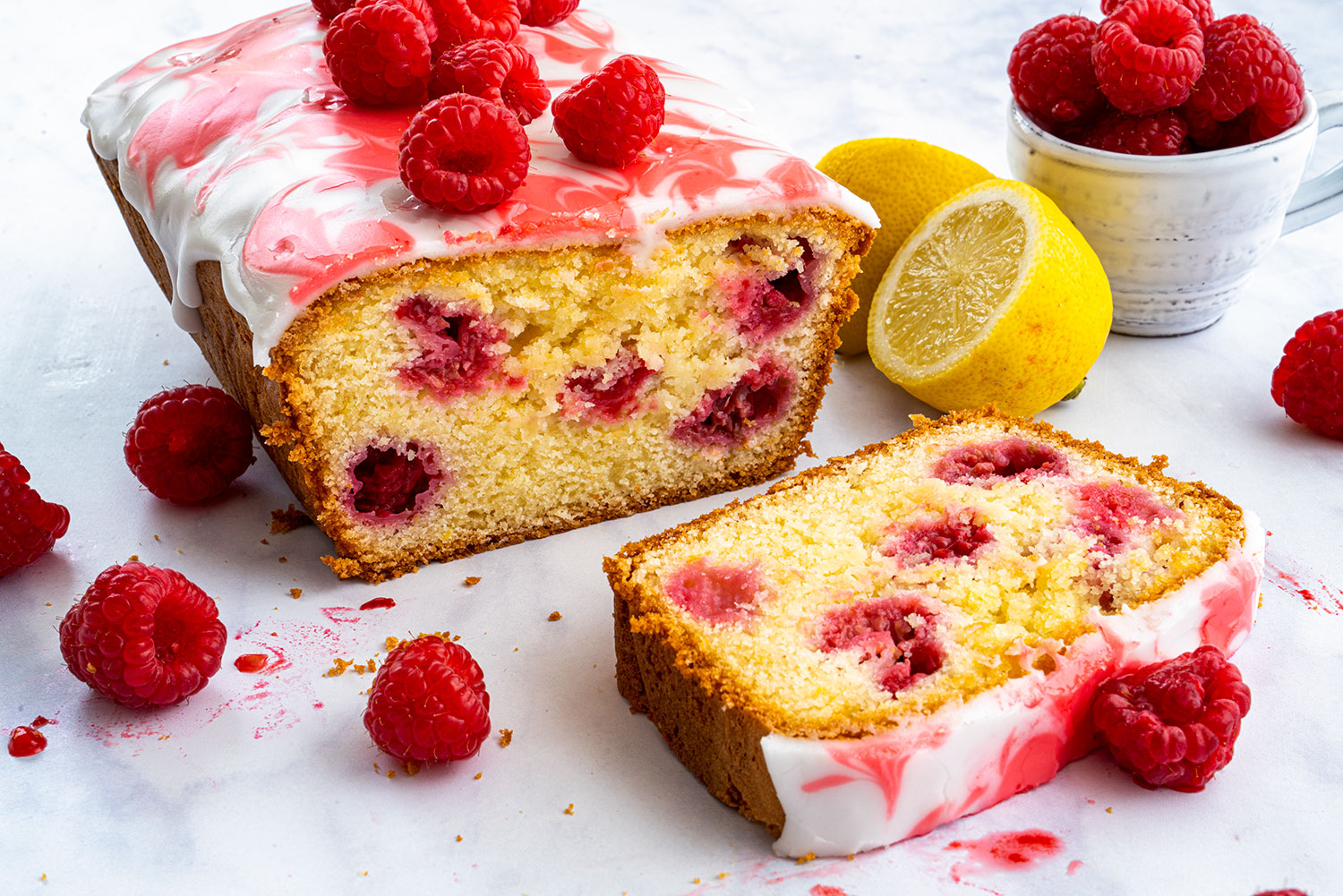Gluten-free Battenberg cake recipe – my BEST EVER version, newly updated for 2020! It’s so good, that nobody would ever know it’s even gf at all.
Gluten-free Battenberg cake recipe, anyone? With the bakers whipping up lots of gluten-y Battenbergs on the Bake Off this year, it’s about time we had a gluten-free version of our own!
Let’s face it: when you’re gluten-free, watching The Great British Bake Off only ever makes you feel:
- a) hungry
- b) jealous
- c) all of the above
But as the bakers are baking Battenberg cakes for the first week of Bake Off, it seemed only right to update this recipe from 2017, fresh for 2020 and beyond.
And clearly, as I looked back at this recipe, my own gluten-free baking skills have improved more than I thought in 3 years!
So here’s my brand new, BEST EVER version of the humble gluten-free Battenberg cake.
Why make my gluten-free Battenberg cake recipe?
- It’s easier than you’d think to get that iconic checkerboard pattern and colour.
- The sponge is lovely, soft and moist, not dry or crumbly like people often assume gluten-free cakes to be.
- Finding gluten-free Battenberg out in the wild is next to impossible… but at home, it’s more than possible – it’s simple!
- You’d never know this recipe was gluten-free AT ALL – yes, even muggles will eat this, so watch out!
- This is one of the few recipes on the blog with tons of step-by-step photos. So you absolutely can’t go wrong.
So what does a gluten-free Battenberg cake taste like?
I can tell you that first of all, it looks every bit as good as it tastes! As with any sponge that has ground almonds in it, it’s super soft, moist and almost melts in your mouth.
The jam in this cake isn’t just for ‘glueing’ it together either – it adds a lovely subtle hit of sweetness in every bite that can’t be matched.
And whilst I’m not usually a massive fan of marzipan, it works so incredibly well with it’s almond flavour, against that almond infused sponge.
Long story short – it’s an absolute classic than never fails to please anyone who looks at it, or eats it!
Here’s everything you’ll need for this recipe – consider it your shopping list! Keep scrolling until you see the recipe card for the measurements and method ??
Gluten-free Battenberg cake recipe: Ingredients
For the sponges:
- butter, softened (or dairy free alternative)
- caster sugar (golden or regular)
- gluten free self raising flour
- ground almonds
- baking powder (ensure gluten free)
- medium eggs
- vanilla extract
- almond extract
- pink food colouring paste (I ONLY recommend using Sugarflair – linked in FAQ section)
To assemble the Battenberg
- apricot jam
- white OR golden marzipan
- icing sugar, for rolling out the marzipan
So I thought I’d kick things off with a little frequently asked questions section – if you just want the recipe, then keep scrolling.
But I’ve thrown in some tips here that will be really helpful if this is your first time baking this, or you want to adapt it. So here they are!
Gluten-free Battenberg cake recipe: Frequently Asked Questions
Can I make this recipe gluten free? Is it suitable for Coeliacs?
It is gluten free, though nobody would know just by tasting it – trust me!
Bear in mind that minimising cross-contamination is hugely important if you’re Coeliac or making this for someone who is. Here’s some tips from Coeliac UK on minimising the risk of cross contamination:
Also, make sure that all ingredients used don’t have any gluten-containing ingredients. Then make that that they also don’t have a ‘may contain’ warning for gluten, wheat, rye, barley, oats (which aren’t gf), spelt and khorasan wheat (aka Kamut).
Here’s some more info from Coeliac UK on identifying safe gluten free products.
Can I make your gluten-free Battenberg cake recipe dairy free?
Yep – you can easily make this dairy-free with ONE simple swap:
- For the sponge cakes, all you need to use is a softened block of hard margarine or a dairy free margarine spread like this, instead of butter.
That’s it! Also, ensure your lemon curd is dairy-free, if using.
Can I make your gluten-free Battenberg cake recipe vegan?
Yep! If you follow the instructions above to make this recipe dairy free, then all you’ve got left to contend with is the eggs.
Whilst I haven’t specifically labelled this recipe as being vegan-friendly because 3 per sponge eggs is quite a few to replace and results can vary, you’re welcome to try some of these egg replacements listed below.
Here’s a few ideas you can use as egg replacements, so each of these = 1 egg.
- 3 tablespoons of aquafaba – water from a can of chickpeas. Keep the chickpeas for a future dinner!
- 1 tbsp of ground flaxseed and 3 tbsp of water
- Egg replacement powder – I’d recommend using Orgran as it’s gluten free.
- 1 tablespoon of chia/flax seeds mixed with 2 tablespoons of water and left for 10 minutes in the fridge.
- 3 tablespoons of applesauce.
I haven’t tested all of these egg alternatives so let me know how you get on in the comments below ??
Can I make this recipe low FODMAP?
Yes! One slice of this cake is low FODMAP and suitable for the elimination phase of the diet.
Is your gluten-free Battenberg cake recipe nut-free?
Unfortunately, because this recipe contains plenty of ground almonds, this one isn’t nut-free.
Which food colouring should I use?
In the past, I’ve used those squirty tubes you find in the supermarket with varying levels of success.
I find that you have to add SO MUCH of it to ensure any actual colour change, that it can negatively affect the consistency of your coloured sponge – it makes the mixture too wet.
So because of that, I’ve swapped to using food colouring gel (you can’t buy it in supermarkets, but you can easily find it on Amazon) because a TINY drop can instantly colour an entire sponge.
I always use Sugarflair for colouring ALL my coloured sponges now and I wish I had started using it sooner! Here’s a link to the pink colour I used for this recipe. It might seem expensive, but you use so little, they actually last for ages!
Can I make this using the all-in-one method?
Of course – I change between creaming method and all-in-one all the time. It’s always a safe bet with a simple sponge like this, so feel free.
It works perfect both ways so it’s totally up to you!
Can I make your gluten-free Battenberg cake in a food processor or standing mixer?
Of course you can, but you definitely don’t need to. I use an electric whisk for this recipe. Here’s a link to the electric whisk I use.
Can I make your gluten-free Battenberg cake recipe by hand?
You can of course, bake this without any assistance from any appliance – just a good ol’ fashioned silicone spatula (or a wooden spoon!) will do. Just make sure you give it a lot of welly, otherwise your mixture won’t be consistent and might not bake properly.
Do I need any special equipment to bake your gluten-free Battenberg cake?
Certainly not! You will need a good quality square tin so here’s a link to the one I use.
Does this recipe need xanthan gum?
Yes it does, although if there is xanthan gum in your self-raising flour already like there is in mine, then you don’t necessarily need to add any. I add a 1/4 tsp additionally, but if you don’t have any then don’t worry.
Without gluten to bind cake batter together, you can often be left with a very loose and crumbly sponge texture which won’t work in a recipe like this.
Some people have asked if they can use psyllium husk powder instead of xanthan gum, but I’ve found that it definitely results in a denser sponge so I wouldn’t overly recommend it.
If you’re really against xanthan gum or you simply don’t have any (and it’s not in your flour blend) then you can omit it, it won’t be the end of the world!
Can I make this recipe using other gluten free flours like buckwheat flour or coconut flour?
There’s a big difference between ‘gluten free plain/self-raising flour’ and a *singular* type gluten free flour. When I say ‘gluten free plain or self-raising flour’ in a recipe, I mean a BLEND of gluten free flours, not just one, singular flour.
Most gluten free flour you buy in the supermarket typically contains a blend of rice flour, potato flour, maize flour, tapioca flour AND buckwheat flour. That’s a lot of different flours!
So to replace it with just one specific type of flour… that’s not going to cut it at all. Definitely go for a gluten free flour blend.
Do I need weighing scales to bake your gluten-free Battenberg cake?
In short… yes, yes and yes! And I wouldn’t advise attempting any my recipes without them.
A lot of work went into fine tuning ratios and quantities and for me, baking is all about consistency and precision. I want you to make this recipe and for it to turn out EXACTLY like mine did.
I’d recommending using digital cooking scales like these so you know you’re getting an accurate measurement and replicating my recipe as accurately as poss.
Can I bake your gluten-free Battenberg cake with less sugar / without sugar?
I can definitely understand the need to reduce sugar in our foods, but this is one of the recipes where I wouldn’t advise it.
Of course, the sugar isn’t just for sweetness – it’s integral to the structure of the cake once baked and is super important.
The more you reduce the sugar in the sponge, the more dry and ‘mealy’ the cake will become.
How long can I keep your gluten-free Battenberg cake for?
I’ve kept it for about 4-5 days in an air-tight container with no problems. If you need it any longer than that, I’d highly recommend freezing it (see advice below for doing that)
When the cake starts getting a little dry, it’s probably starting to get past its best.
Can I freeze your gluten-free Battenberg cake?
Of course! I’ve frozen it for up to 2-3 months no problem. Ideally, slice up the cake first before freezing – that way you can simply defrost slices as and when you need them.
Plus, it’ll thaw a lot quicker. When you want to eat it, each slice should take around 4 hours to defrost at room temperature.
How can I tell when my gluten-free Battenberg cake is done?
Grab a skewer and give it a poke in the centre. If it comes out clean, then it’s done!
But if the skewer comes out moist and cake-like, it’s best to pop it back in for a bit longer.
Gluten-free Battenberg cake recipe: Method
Line a 20cm square tin with grease proof paper. Line it so there is a centre piece that splits the tin in half, or use some foil to make a block to separate the tin into two.
I do this by folding the entire sheet of baking paper in half like a book. Then, roughly an inch from the folded edge, create another fold the paper by folding in the opposite direction. Flip the paper over and repeat on the other side. It should basically create an erect (we’re all adults here ?) triangle in the middle of the paper.
Then, I simply cram it into my baking tin and hold it in place with pegs until my cake batter is in.
Heat the oven to 160C Fan / 180C.
To make your sponge, cream together your softened butter and sugar until light and fluffy.
Add in the rest of your ingredients, except your food colouring and mix together until combined (I use my electric hand mixer).
Split your mixture into two separate bowls evenly. Leave one bowl and in the other add some pink (or red and white mixed!) food colouring. If you are using supermarket food colouring your will need to make it more vibrant as the colour cooks out, if you use the one I recommend (see ingredients) then you will only need a little.
Place your cake mixture into your prepared tin – the pink mixture in one side and the plain mixture in the other. 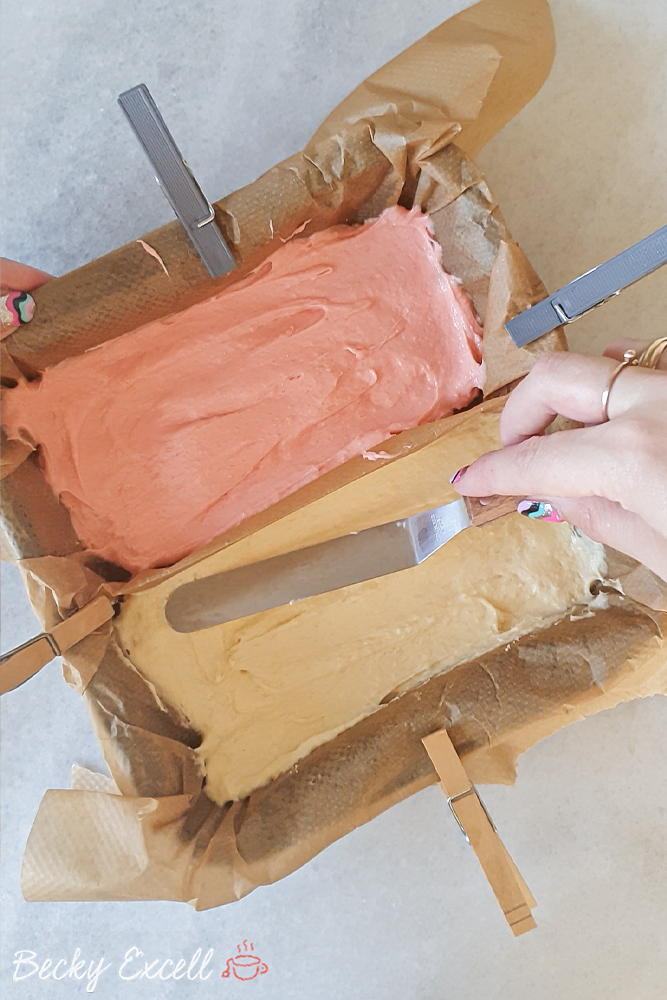

Bake in the oven for around 25-30 minutes or until cooked through – check with a skewer.
Allow to cool in the tin for around 5-10 minutes before placing on a cooling rack to completely cool.
Heat 5-6 tbsp of apricot jam in the microwave so that it is lovely and smooth for sticking together your cakes. Allow to cool.
Trim the edges of both cakes with a sharp knife and then evenly cut both cakes into strips. (I measure the height of the cakes and then use that as a guide for how wide each strip should be).
Once cut into strips, then trim the browned tops off – I don’t trim the bottom as your strips will start to become too thin. You will need two strips of yellow cake and two strips of pink cake. Make sure all of your sponge strips are the same length as well.
Cover a large surface with a little icing sugar and roll out your marzipan. It will need to cover the entire Battenberg so will need to be at least 20cm square and around 0.5cm thick.
Brush the marzipan liberally with your now slightly cooled apricot jam, saving a little for later.
Place one of each colour sponge onto the marzipan (browned bottom facing up) and brush the tops with apricot jam (except the ends). Brush between the two coloured sponges so they stick together and then push them together.
Place the other two sponges on top, the other way round to give the checkerboard effect.
Very carefully roll up your assembled cake in the marzipan. Lift the marzipan up and over, try and keep it as tight to the cake as possible to reduce any gaps. Create a seam right in the middle and trim off any excess – this will be underneath so no need to be too neat.
Carefully flip the cake over and trim the cake at each end so there’s no more excess marzipan.
Slice it up and enjoy!
Oh and here’s a printable version of my gluten-free Battenberg cake recipe. Please remember to give it 5 stars if you tried it and enjoyed it as it helps people know it’s worth trying too! ⭐️
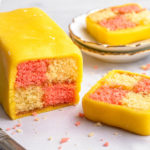
Gluten Free Battenberg Cake Recipe - BEST EVER!
Ingredients
For the sponges:
- 175 g butter softened (or dairy free alternative)
- 175 g caster sugar golden or regular
- 140 g gluten free self raising flour
- 50 g ground almonds
- 1/2 tsp baking powder ensure gluten free
- 3 medium eggs
- 1 tsp vanilla extract
- 1/2 tsp almond extract
- pink food colouring paste I ONLY recommend using Sugarflair - linked in FAQ section
To assemble the Battenberg
- apricot jam
- 400 g white OR golden marzipan
- icing sugar for rolling out the marzipan
Instructions
- Line a 20cm square tin with grease proof paper. Line it so there is a centre piece that splits the tin in half, or use some foil to make a block to separate the tin into two.
- Heat the oven to 160C Fan / 180C.
- To make your sponge, cream together your softened butter and sugar until light and fluffy.
- Add in the rest of your ingredients, except your food colouring and mix together until combined (I use my electric hand mixer).
- Split your mixture into two separate bowls evenly. Leave one bowl and in the other add some pink (or red and white mixed!) food colouring. If you are using supermarket food colouring your will need to make it more vibrant as the colour cooks out, if you use the one I recommend (see ingredients) then you will only need a little.
- Place your cake mixture into your prepared tin - the pink mixture in one side and the plain mixture in the other. Bake in the oven for around 25-30 minutes or until cooked through - check with a skewer.
- Allow to cool in the tin for around 5-10 minutes before placing on a cooling rack to completely cool.
- Heat 5-6 tbsp of apricot jam in the microwave so that it is lovely and smooth for sticking together your cakes. Allow to cool.
- Trim the edges of both cakes with a sharp knife and then evenly cut both cakes into strips. (I measure the height of the cakes and then use that as a guide for how wide each strip should be).
- Once cut into strips, then trim the browned tops off - I don't trim the bottom as your strips will start to become too thin. You will need two strips of yellow cake and two strips of pink cake. Make sure all of your sponge strips are the same length as well.
- Cover a large surface with a little icing sugar and roll out your marzipan. It will need to cover the entire Battenberg so will need to be at least 20cm square and around 0.5cm thick.
- Brush the marzipan liberally with your now slightly cooled apricot jam, saving a little for later.
- Place one of each colour sponge onto the marzipan (browned bottom facing up) and brush the tops with apricot jam (except the ends). Brush between the two coloured sponges so they stick together and then push them together.
- Place the other two sponges on top, the other way round to give the checkerboard effect.
- Very carefully roll up your assembled cake in the marzipan. Lift the marzipan up and over, try and keep it as tight to the cake as possible to reduce any gaps. Create a seam right in the middle and trim off any excess - this will be underneath so no need to be too neat.
- Carefully flip the cake over and trim the cake at each end so there's no more excess marzipan.
- Slice it up and enjoy!
Video
Notes
Nutrition
Any questions about the recipe? Please do let me know by following me on Instagram and leaving me a comment on a recent photo.
If you want to send me a photo of how your bake turned out, you can request to join my Facebook group and post it there. Myself and everyone else would love to see it!
Thanks for reading,
Becky xxx
Oh and don’t forget to pin this for later!

